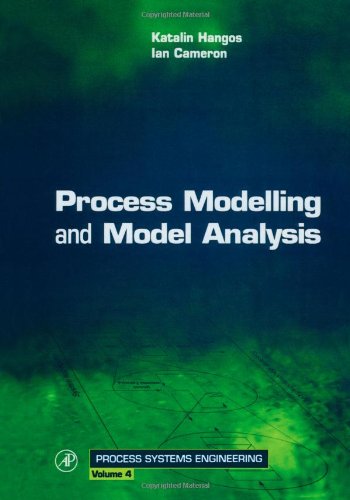Process Modelling and Model Analysis epub
Par yi roger le jeudi, août 11 2016, 01:36 - Lien permanent
Process Modelling and Model Analysis by George Stephanopoulos, Ian T. Cameron, John Perkins, Katalin Hangos


Download eBook
Process Modelling and Model Analysis George Stephanopoulos, Ian T. Cameron, John Perkins, Katalin Hangos ebook
Publisher: Academic Press
ISBN: 0121569314, 9780121569310
Format: pdf
Page: 561
Process models can be classified using two independent dimensions: logical vs. In one or more of the following fields: bioreactor/bioprocess technology, inorganic chemistry, analytical chemistry, fluid dynamics, process modeling and computational analysis applied to environmental/microbial systems. Process modeling is one of the key aspects of process systems engineering. I'm here to tell you why you probably shouldn't be doing attribution modeling (yet), and you can get more out of other analytics techniques before adding more attribution complexity. I believe most marketers can find easier ways to optimize and refine their strategy by using simpler segmentation, analysis and combining their web data with transaction data, before moving onto a more complex attribution model. In this work, the effect of turning parameters (cutting speed and feed) and nano calcium carbonate content on the machinability properties of polyamide 6/nano calcium carbonate composites was investigated by analysis of variance. Business Process Associate - CAT Modeling Analyst Kuala Lumpur - Kuala Lumpur. Business Analysis and Process Modelling. It is a significant activity in most major companies around the world, driven by applications such as process optimization, design, and control. Will have its flaws and just be one version of the truth. Be Informed, which provides businesses a way to build model-driven semantic applications, unveiled a new partnership and a gratis version of its software for users at the Semantic Technology & Business conference this week. It seems to me that business analysis has to be concerned with what affects the business. He has a deep expertise in a rare combination of fields, including: Business process identification, modeling, analysis, and redesign; application requirements specification; and data modeling and information management. If you are working on a model and have not built the preceding model(s) then you are not going to achieve a Quality outcome. Disaster risk management (DRM) has been defined as “a systematic process that produces a range of measures associated with hazard non-quantified modeling as applied to threat assessments and strategy analysis. To run an efficient and effective organization in today's world, business users need to be able to clearly analyze and understand business activities, model repeatable processes, and have clear visibility into process executions.